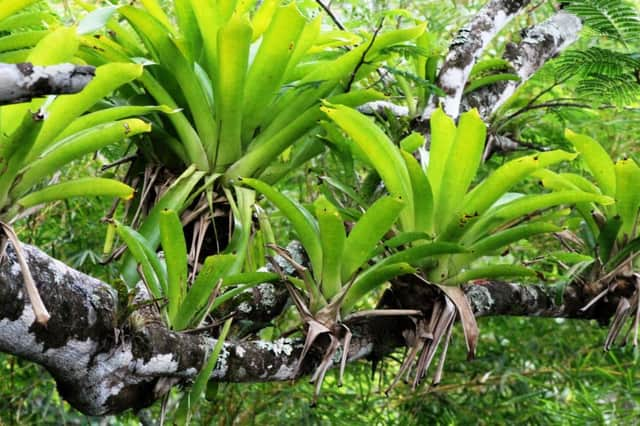Bromeliads show just how clever they can be


If you want to see a bromeliad, you need to visit a tropical house. Or visit South America where the plants grow in huge numbers.
Such is their ability to make the most of what’s on offer, they can be found from sea level to more than 14,000 feet and in a wide variety of habitats from hot, dry deserts to moist rainforests and cool mountainous regions
Advertisement
Hide AdAdvertisement
Hide AdCharacteristically, the best-known bromeliads are shallow-rooted with flowers that are usually small and insignificant – and many live in trees. To be more precise, most live on trees where they thrive in bright light, shaded from direct summer sun and exist on decaying foliage and pooled water.
So these epiphytic varieties produce hard, wiry roots with which they anchor themselves into clefts between branches or onto the branches themselves and the trunks where they capture water and nutrients.
One study found 175,000 bromeliads per hectare (2.5 acres) in one forest. A wide variety of organisms takes advantage of the pools of water trapped by bromeliads. A study of 209 plants from the Ecuadorian lowlands identified 11,219 animals, representing more than 300 distinct species, many of which are found only on bromeliads.
Clever plants, epiphytic bromeliads.
Even more amazing are lithophyte bromeliads that live in or on rocks where they feed off nutrients from rainwater and nearby decaying plants, including their own dead tissue.
Very clever plants, lithophyte bromeliads.
Advertisement
Hide AdAdvertisement
Hide AdAnd then there are the terrestrial bromeliads which keep their roots firmly on – and in – the ground. Not quite as clever, terrestrial bromeliads, but still successful.
The largest bromeliad is Puya raimondii, which reaches anything up to four metres in height tall and can produce a flower spike 10 metres tall.
Probably the most famous of all bromeliads is the pineapple, which Christopher Columbus discovered while sailing around the West Indies.
Very interesting plants, bromeliads.